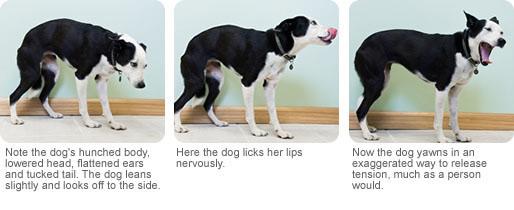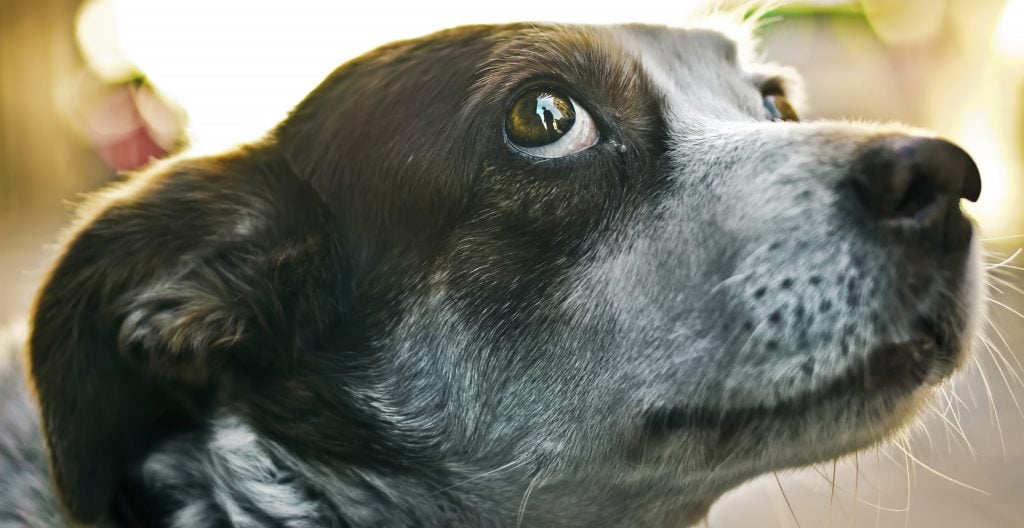- This post contains affiliate links. Read more here.
- Not a substitute for professional veterinary help.
There are many things universally acknowledged to frighten dogs— vacuum cleaners, thunderstorms, a world without tennis balls. But did you know that you could be causing stress, fear, and anxiety in your dog unintentionally?
Even if your dog isn’t having a full-on panic attack, the layers of stress that build up over time can cause not only behavioral problems, but health problems too.
Take a look at the four biggest ways you could be contributing to your dog’s stress level. By eliminating these behaviors, you could be adding years to your dog’s life, not to mention developing an even deeper bond.
1. Ch-ch-ch-ch-changes
Just like our furless children, dogs thrive on consistency and routine. A little change keeps things interesting, sure, but helping your dog feel safe means providing regularly scheduled meals, walks, and playtime. It’s also important to be consistent with training methods, caregivers, and even house guests. Make sure your dog has a safe place they can go, like a bed or a crate, when change is afoot.
2. Not Enough Personal Space
Every dog has their “bubble.” This personal space keeps them feeling comfortable around other humans and dogs. Individual dogs tolerate our affection differently, including our spontaneous hugs, kisses, and general poking and prodding about the face and neck. These behaviors mean love to us, but they can be intimidating for dogs. Teaching children to ask permission before approaching a dog is helpful. It’s also important to understand how much room your dog needs when passing another dog on walks. Don’t force your way into a dog’s comfort zone if you can avoid it. It’s always best to let the dog come to you to build trust and respect.
3. Your Body Language
What dogs lack in verbal literacy, they make up for in spades with a deep, acute sense of your conscious and unconscious body talk. Every day, your dog is taking in your posture and facial expressions, and some of it may be frightening him.
Did you know? Your dog expects you to adhere to the same code of body language as another dog. This means no staring, no looming over his head, and no making sudden moves towards his face.
Take a look at his body language, too, for cues about whether he’s feeling scared.

source: ASPCA
4. Your Stress
She smells your sweat, reads your facial expressions, and hears your racing heartbeat. Yes, your dog knows when you’ve had a rough day at the office. Even if you don’t mean for it to affect your dog, your stress might be frightening or unsettling for her. She might believe that she’s causing it, in fact.
Solution? Take a minute for a deep breath, shake off the day, and consciously greet your dog calmly and joyfully. Dogs are wonderful listeners, so long as they know you aren’t upset at them. (Also, they can’t eat chocolate, so hey, more for you.) If you’re feeling a little overwhelmed, you can also try some calming techniques or a special day of pampering for you—and your dog!
How to Help: Gear and Toys for Anxious Dogs
There are also plenty of toys and gear created with the anxious pup in mind. Overall, harness the power of distraction, and give them a comfy, dog-designated area for relaxation.
1. ThunderShirt
Uses gentle, constant pressure to calm dogs.
2. Puzzle Toys
Perfect for keeping pups occupied while you’re out. The tricky treat ball is a particular favorite.
3. Long-lasting Chews
These chews will give your anxious dog something to focus on. Naturally-shed antler chews or a KONG with frozen peanut butter always work wonders.
4. Comfy Bed
Nothing relaxes a dog like a comfortable place to rest their head. Extra points for supportive memory foam that’s easy on the joints.
5. Dog Crate
With tons of variety and designs, you’re bound to find the perfect crate for your family. Training is a must, of course, before you implement the crate with your dog.
The Bottom Line
Lots of change, not enough personal space, and your body language and stress signals can frighten your dog. The good news is that you can turn it around! Dogs live in the moment, they always forgive, and they want you to be happy. It’s just one of the many reasons we love them.


